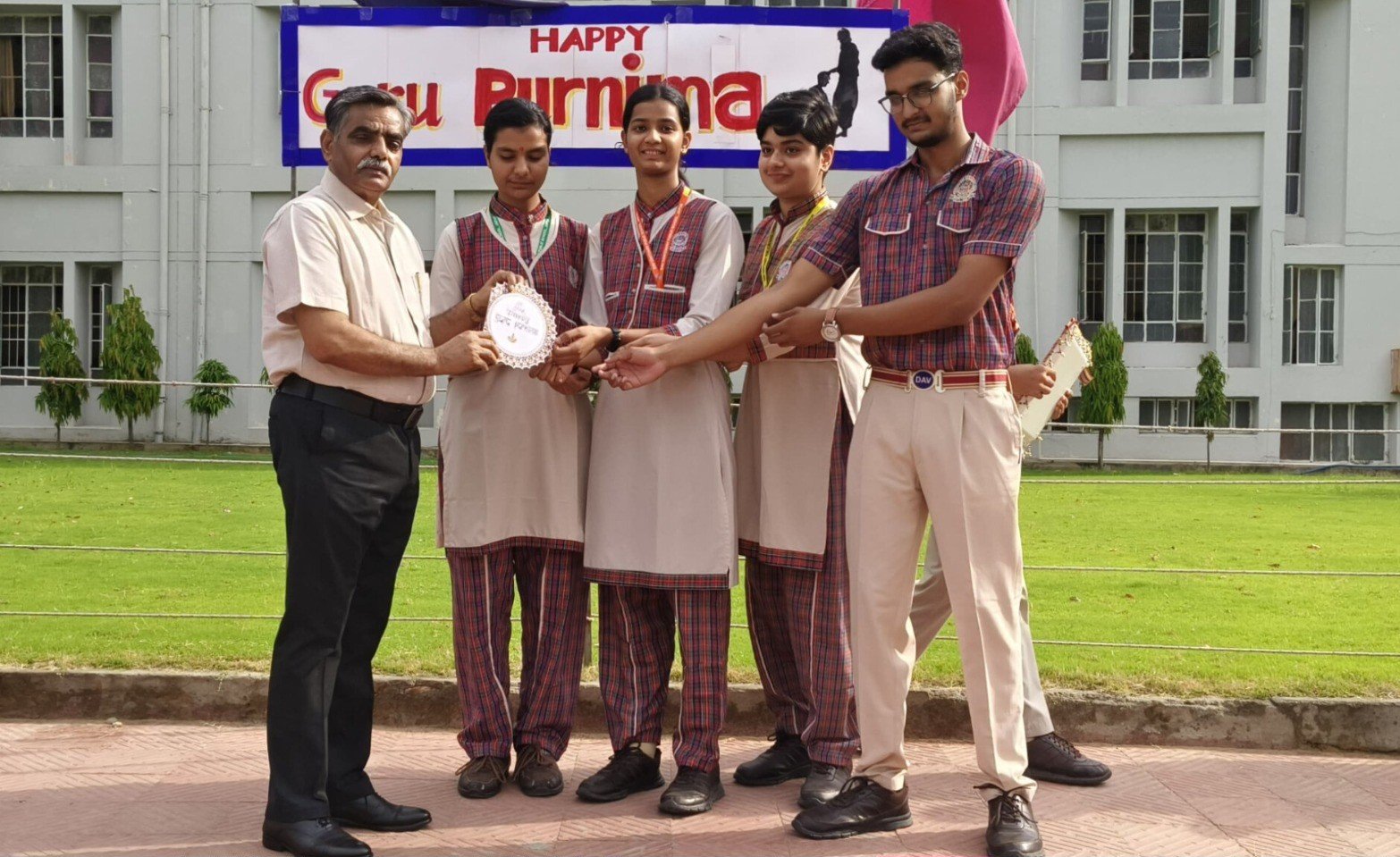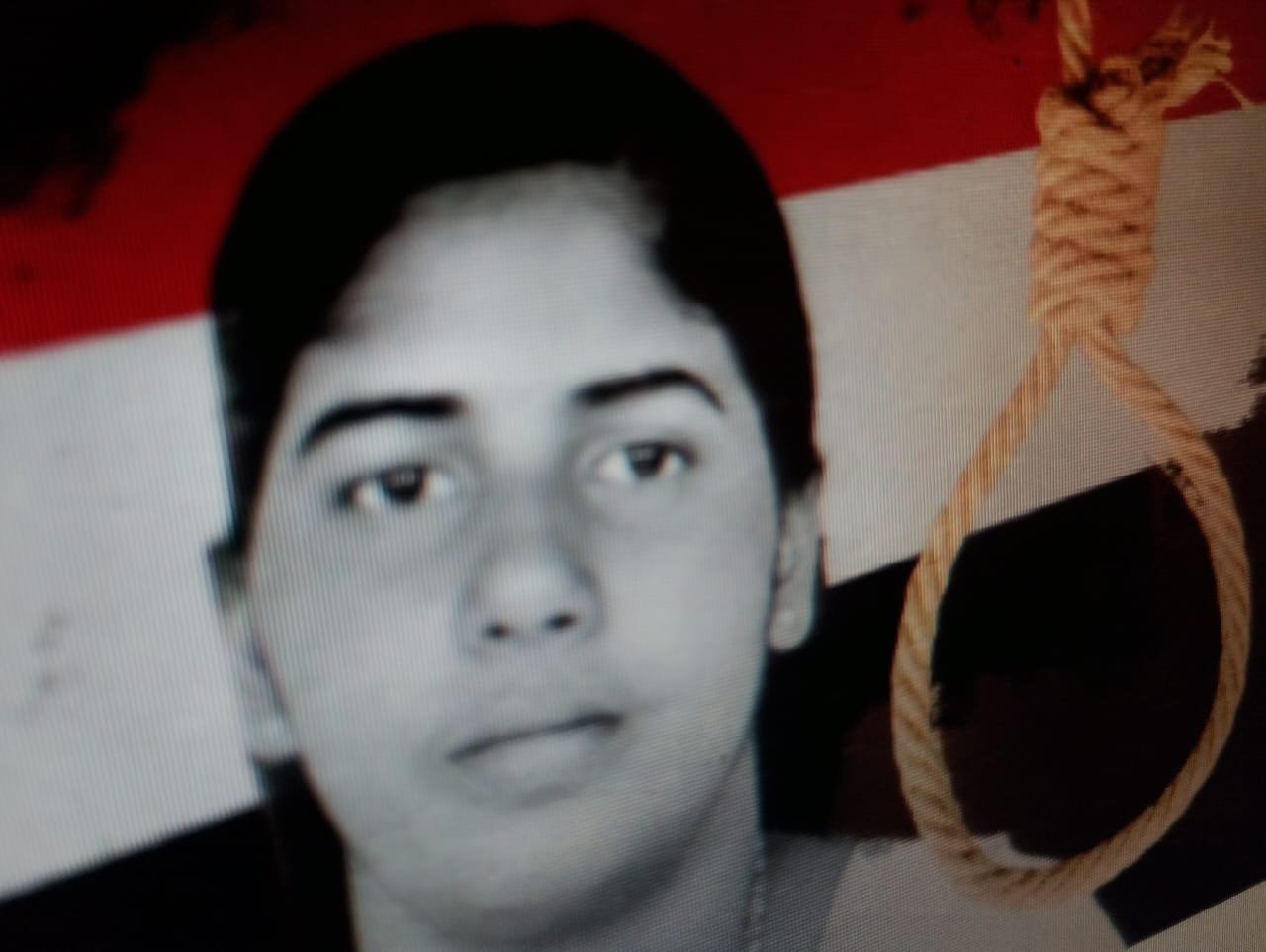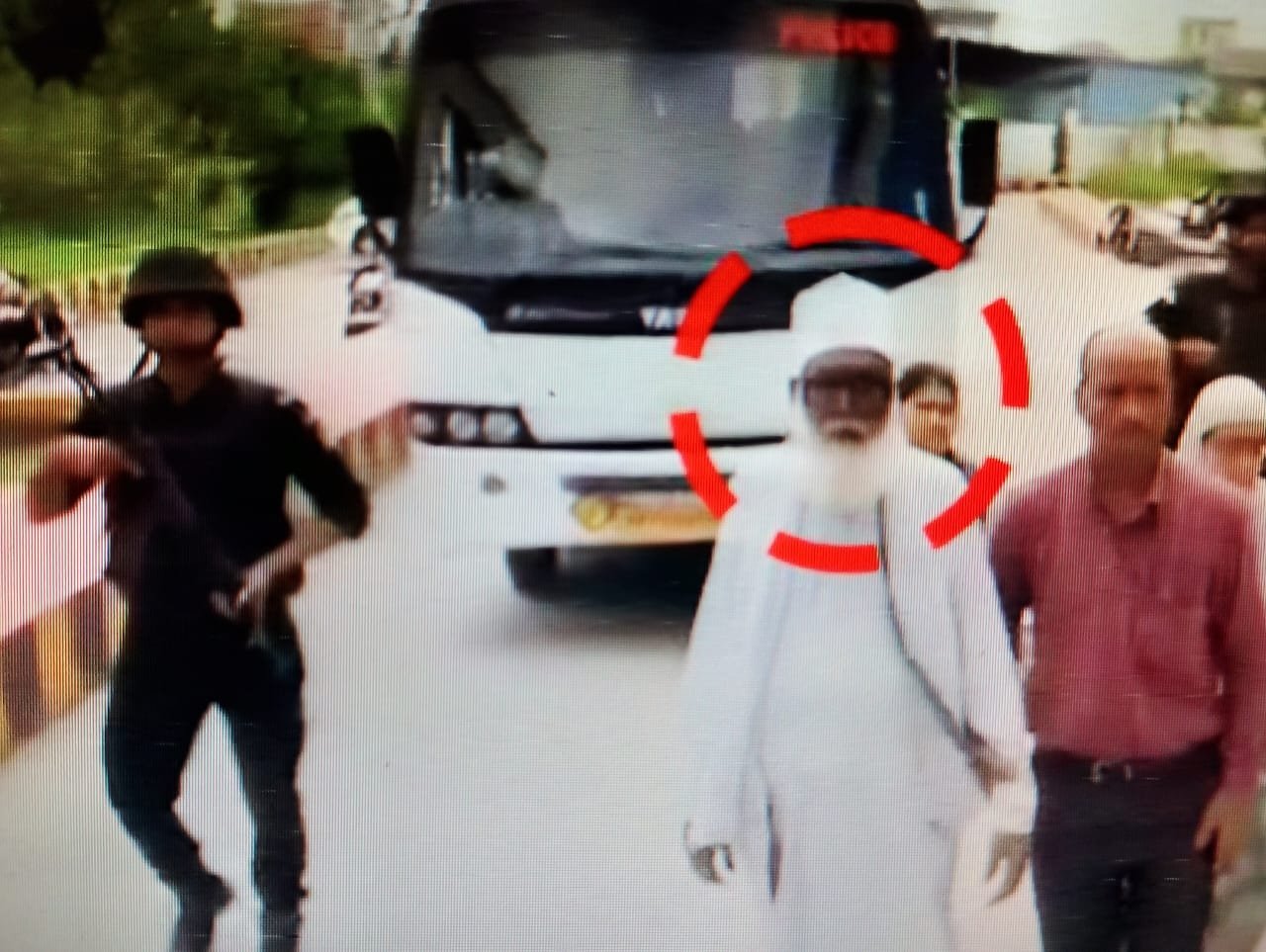India
Inhuman: The Opposition’s Shackles-and-Chain Protest Against U.S. Deportation Flights

Contents
Introduction to the Protest
The shackles-and-chain protest organized by various opposition groups against U.S. deportation flights has emerged as a significant form of dissent in recent years. This protest serves not only as a symbolic gesture but also highlights the grave concerns surrounding human rights violations associated with deportation practices. Many activists argue that the procedures involved in these flights are dehumanizing, treating individuals as mere cargo rather than human beings with unique stories and families. The use of shackles and chains in this context underscores the restrictive and punitive nature of current immigration policies.
One of the core issues driving this protest is the profound impact of deportation on families. The separation of loved ones due to deportation can lead to psychological and emotional distress, particularly for children who often lose their primary caregivers. Data indicates that nearly 5 million U.S. citizen children have at least one parent who is undocumented, placing countless families at risk of sudden and destabilizing separations. Furthermore, this protest seeks to challenge the moral implications of deporting individuals who may have established lives and communities in the United States. Many of those affected have roots extending back years, highlighting a disconnect between immigration policies and the lived realities of these families.
Historically, the trend of aggressive deportation serves as a continuation of systemic issues intertwined with racial and social injustice. Recent statutory changes have amplified the frequency and fervor of these deportation flights, prompting significant public outcry. By encapsulating these concerns in a tangible form—as seen with the shackles-and-chain symbolism—opposition groups endeavor to capture the urgency of their message of flights, urging a reevaluation of current policies and an emphasis on humane treatment. Ultimately, this protest signifies a collective resistance against practices viewed as inhumane by countless advocates of human rights.
Understanding Deportation Flights
Deportation flights are a fundamental component of the U.S. immigration enforcement system, specifically designed to remove individuals who have been ordered to leave the country, often following legal proceedings. The purpose of these flights is to facilitate the return of undocumented immigrants or those who have violated their visa terms to their countries of origin. Typically, deportation flights are organized by the Immigration and Customs Enforcement (ICE) agency, which is responsible for upholding U.S. immigration laws.
The process of deportation begins when an individual is detained by immigration authorities. After legal hearings conclude, and if a removal order is issued, ICE will arrange for the individual’s transportation back to their homeland. These flights can vary in scale, ranging from small chartered jets to large commercial airliners that transport multiple detainees. It is not uncommon for ICE to rent entire flights to ensure the efficient and secure removal of groups of individuals.
The significance of deportation flights extends beyond logistics. They are entwined with complex immigration laws that govern who is eligible for deportation and under what circumstances. This legal framework influences the number of individuals affected each year, as policy changes or shifts in enforcement priorities can lead to spikes in deportations. The impact on those deported can be profound; many individuals report experiencing trauma, separation from family, and the uncertainty about their future upon return. Moreover, deportation flights often evoke emotional and political responses, shedding light on the broader dialogue surrounding immigration policy in the U.S.
In light of these factors, understanding deportation flights necessitates a comprehensive view of both the operational aspects and the human experiences attached to them, which are increasingly vital in discussions about U.S. flights immigration policy.
The Symbolism of Shackles and Chains
The use of shackles and chains as symbols during protests against U.S. deportation flights serves as a powerful visual representation of oppression and systemic injustices. Historically, shackles and chains have been associated with the subjugation of marginalized groups, particularly during the transatlantic slave trade when countless individuals were forcibly taken from their homes and subjected to inhumane treatment. This historical context provides a backdrop against which contemporary issues of human rights abuses can be examined.
In modern times, the imagery of shackles and chains resonates strongly with the ongoing struggles faced by immigrant communities, many of whom experience the weight of fear, displacement, and exclusion. Protestors harness these symbols to evoke feelings of empathy and urgency, drawing attention to the dehumanizing effects of deportation policies that can separate families and dismantle communities. The act of chaining oneself or others during a demonstration starkly illustrates the constraints imposed by such policies, emphasizing the urgency for comprehensive immigration reform.
Culturally, shackles and chains also represent a connection to broader struggles against justice and inequality. They resonate with movements aimed at fighting racial oppression, colonial legacies, and various forms of systemic discrimination. Protestors juxtapose these symbols against the backdrop of a government system that often prioritizes enforcement over compassion, making a clear statement about the need for increased awareness and action from society at large.
The strategic use of these symbols communicates a narrative of resistance, underscoring the insistence that deportation practices must be scrutinized in light of human dignity and rights. By interweaving historical references with contemporary struggles, such visual rhetoric significantly enhances the impact of the protest, making it a compelling call to action for justice and equity in immigration policy.
Profiles of the Organizers
The shackles-and-chain protest against U.S. deportation flights has garnered significant attention, thanks in large part to the dedicated individuals and organizations leading the charge. Among the key figures is Ana Mendoza, a daughter of immigrants who has long been involved in immigrant rights advocacy. Having experienced the trauma of her family’s struggles with the deportation system, Mendoza brings a personal perspective that resonates deeply with many. Her role as a co-founder of the grassroots coalition, Voice of the Voiceless, aims to amplify marginalized voices impacted by deportation. This organization not only advocates for policy change but also provides direct support to individuals facing deportation.
Another prominent organizer is James O’Connor, a seasoned activist with over a decade of experience in social justice movements. O’Connor has previously led initiatives focusing on racial justice and workers’ rights, which intersects deeply with immigration issues. His tireless work at the nonprofit Citizens for Justice allows him to unite various coalitions advocating for immigrants’ rights. His commitment to justice stems from witnessing friends and family torn from their homes due to dysfunctional immigration flights policies.
In addition to these individuals, various organizations, including United Immigrants Alliance and Fair Flight Coalition, play critical roles in mobilizing supporters. They foster community engagement and maintain pressure on lawmakers to reform the current immigration system. These coalitions are rooted in a deep sense of justice and equity, drawing upon the experiences and testimonies of those directly affected by the U.S. deportation policies. Through collective action, they seek to dismantle the oppressive structures of the deportation system, showcasing the urgent need for systemic change.
Community Involvement and Support
The recent protests against U.S. deportation flights have garnered significant traction, showcasing a profound level of community involvement and support across diverse demographics. Across the nation, various community groups, activists, and allies have rallied together in a unified stand against what they perceive as unjust deportation practices. These protests illustrate the power of collective action in asserting human rights while emphasizing racial and social justice.
Local organizations have played pivotal roles in mobilizing community members. Groups focused on immigrant rights, civil liberties, and social justice have organized town hall meetings, educational workshops, and solidarity marches. Volunteers from these entities have supported the protests, offering resources such as food, transportation, and safety measures for demonstrators. Additionally, these organizations have forged partnerships with national networks that amplify their efforts on a broader scale, thus ensuring that the voices of those affected by deportations are heard more widely.
Moreover, the multi-faceted nature of these protests has allowed individuals from various backgrounds to engage in the movement. From faith-based groups to labor unions, a spectrum of allies has united against the injustices associated with U.S. deportation flights. This comprehensive participation signifies not only a localized discontent with punitive immigration policies but also a recognition of shared values among different groups. Collaborative initiatives, such as art displays and educational campaigns, have also emerged to further inspire community members, illustrating the urgency of resisting measures perceived to dehumanize vulnerable populations.
As these community-led efforts continue to evolve, they further strengthen the network of support for individuals facing deportation, underscoring the importance of solidarity in confronting systemic injustices. This collective resolve reflects a growing awareness that resisting deportation policies is not merely an immigration issue but an overarching human rights imperative that affects everyone. The convergence of community resources, support systems, and grassroots activism showcases a resilient front against perceived injustices.
Media Coverage and Public Perception
The media coverage surrounding the recent protest against U.S. deportation flights has been multifaceted, reflecting diverse perspectives and societal emotions. Various outlets employed a range of narratives that shaped public perception significantly. Some media emphasized the moral implications of deportation practices while others framed the protest within a political context, highlighting the activists’ demands for systemic change. This variation in coverage illustrates the complex nature of public discourse regarding deportation.
Political commentators noted that the coverage often mirrored the prevailing narratives of partisan outlets. For instance, media aligned with liberal ideologies typically portrayed the protest as a noble stand against what they described as inhumane deportation policies. Conversely, conservative outlets frequently depicted the protest as disruptive and counterproductive, framing it as a challenge to law and order. Such portrayals contributed to a polarized public perception, influencing how different groups responded to the issue of deportation.
Moreover, social media played a crucial role in amplifying the event. Platforms such as Twitter and Facebook saw an influx of hashtags related to the protest, enabling greater visibility and engagement from the public. The immediacy of social media coverage allowed for real-time reactions and discussions, fostering a community that shared both support and criticism of the protest. This dynamic interaction has contributed to a more nuanced understanding of the broader implications of deportation practices.
Furthermore, the economic aspects of deportation are increasingly part of the dialogue. Some media coverage highlighted stories from affected families, showcasing the financial burden of deportations on communities. This framing has resonated with numerous audiences, allowing them to conceptualize how U.S. deportation flights impact not only individuals but also the socioeconomic fabric of society.
Thus, the intersection of media coverage and public opinion reveals a complex landscape where differing political, social, and economic lenses shape the conversation surrounding deportation. It is essential to understand these dynamics to grasp how sentiments regarding deportation practices have evolved over time.
Legal and Political Implications
The legal framework governing U.S. deportation flights is complex and often contested, delineating how individuals facing removal are treated under immigration laws. Protests against these flights have emerged as a response to perceived injustices within this system, prompting advocates to push for legislative changes aimed at reforming deportation processes. These changes include calls for more humane treatment of individuals being deported, increased transparency in deportation procedures, and a reevaluation of the criteria that lead to deportation. As such, there is a growing movement to ensure that deportation policies are both fair and just, respecting human rights standards.
In recent years, the political climate regarding immigration laws has become increasingly polarized, with opinions spanning a wide spectrum. While some factions advocate for stricter enforcement and expedited deportations, others argue for reforms that protect vulnerable populations. This division has led to a heightened atmosphere of confrontation, particularly during protests against deportation flights, which serve as a platform for those advocating for a more compassionate immigration policy. The political implications of these protests are significant, as they not only galvanize public opinion but also influence legislative discussions at both state and federal levels.
Additionally, legal actions have been initiated in response to the protests, challenging the legality of deportation practices and questioning the constitutional rights of detainees. These lawsuits often cite violations of due process or humanitarian principles, aiming to halt deportations that are deemed unlawful or inhumane. The outcomes of these legal battles could set a precedent for future deportation policies and the protests surrounding them, highlighting the interplay between grassroots activism and legislative reform. The ongoing dialogue surrounding deportation flights underscores a critical juncture in U.S. immigration policy, with far-reaching consequences for those affected.
Impact on Immigration Policy
The recent protests against U.S. deportation flights have ignited a crucial dialogue surrounding immigration policy. Activists, advocates, and public figures have united to express their discontent with current practices. Their efforts have brought to light significant concerns regarding the treatment of undocumented immigrants, the effectiveness of deportation as a strategy, and the ethical implications tied to such government actions. As immigration policy remains a contentious issue, the voices raised in opposition are increasingly influential.
One notable impact of these protests is the emerging debate regarding potential reforms to immigration policy. Many advocates are calling for a reassessment of deportation protocols, arguing for a more humane approach that considers the circumstances of individuals facing deportation. This shift in discourse is fostering an environment where policy proposals aimed at mitigating the harsh realities of deportation could gain traction. Legislative bodies may feel compelled to address constituents’ concerns, which can, in turn, drive reforms designed to protect the rights and dignity of immigrants.
Furthermore, these protests serve as a clear representation of public sentiment regarding deportations. As citizens engage more actively in advocating for their beliefs, particularly against unjust practices, governmental responses may evolve. The pressure exerted by organized groups can compel policymakers to prioritize reform efforts, potentially leading to legislative changes aimed at restricting deportations or improving the conditions for those within the immigration system.
In understanding the link between public opposition and immigration policy, it is evident that protests play a pivotal role in shaping the conversation surrounding deportations. As advocates continue to amplify their voices, policymakers must navigate this landscape of dissent, leading to a potential reconfiguration of immigration policies reflective of societal values and humanitarian considerations.
Summary and Call to Action
The shackles-and-chain protest against U.S. deportation flights symbolizes a critical juncture in the ongoing discourse surrounding immigration policies and deportation practices. This form of demonstration sheds light on the inhumane treatment of individuals facing deportation, drawing attention to the often neglected human rights implications of such actions. Protesters have successfully highlighted the stark realities endured by those shackled and subjected to cruel treatment when being forcibly removed from the United States. As such, this protest is not merely a local issue but a reflection of broader systemic problems within U.S. immigration practices.
Also read : Understanding Trump’s Mass Deportation Efforts Amid US Military Support to India
It is essential to recognize the significance of these demonstrations in igniting conversations about the need for comprehensive reform. Each protest serves as a rallying cry, urging society to reconsider how deportation practices are framed and implemented. The use of shackles and chains serves not only as a powerful visual statement of resistance but also as an emotional catalyst for advocacy around immigrant rights. It is imperative that we, as a community, reflect on the implication of our immigration approaches and strive for more humane alternatives.
In light of these observations, readers are encouraged to engage with this pressing issue through various avenues. Activism, whether through participation in local protests, or supporting organizations that champion immigrant rights, can make a tangible difference. Educational initiatives can also spread awareness concerning the consequences of deportation on families and communities, fostering empathy and understanding within society. By taking these steps, we contribute to a broader movement aimed at ensuring dignity and humane treatment for all individuals, regardless of their immigration status. Collective action can forge significant change in unjust systems and reaffirm our commitment to justice and compassion.
Accident
Vadodara Bridge Tragedy: Death Toll Rises to 19, Two Still Missing – Rescue Operations Continue in Mahisagar River

Contents
Vadodara (Gujarat), July 11, 2025
A heart-wrenching incident has shaken Gujarat as the Gambhira–Mujpur bridge over the Mahisagar River in Vadodara district collapsed unexpectedly. So far, 19 people have lost their lives, while 2 individuals remain missing. Rescue teams have been relentlessly working for the third consecutive day in the hope of saving lives and retrieving the missing.
How Did the Tragedy Happen?
The incident occurred on the morning of July 9, when several vehicles were crossing the bridge. Suddenly, a major section of the bridge collapsed into the river, dragging with it two trucks, an SUV, a pickup van, an auto-rickshaw, and two motorcycles. The bridge was nearly 40 years old, and multiple complaints had been made about its deteriorating condition.
Victims Identified, Families Devastated
So far, 18 bodies have been recovered from the debris, while one critically injured person succumbed to injuries at the hospital, taking the total death toll to 19. Among the victims were women, children, and entire families who were out on a pilgrimage for Guru Purnima.
Search Operations Still Underway
Rescue efforts by NDRF, SDRF, and fire brigade teams are still ongoing. The operation is facing major challenges due to the river’s depth, strong current, and over 10 feet of thick mud, making it difficult to access submerged vehicles. Cranes, boats, and divers are being deployed to find the two missing persons.
Government Response and Action
In the wake of the incident, the state government swiftly suspended four engineers and has ordered a detailed investigation into the bridge collapse. The government has also announced financial compensation of ₹2 lakh to the families of the deceased and ₹50,000 for the injured.
Public Outrage and Unanswered Questions
Local residents claim the bridge was already in a dangerous condition, but authorities failed to take timely action. Media reports reveal that just days before the tragedy, a journalist had posted a video highlighting the poor state of the bridge, which went ignored.
This incident has once again exposed the negligence and oversight in maintaining public infrastructure. Behind every number is a grieving family – a shattered home, a mother who lost her child, a father never to return. The need of the hour is strict accountability, immediate structural audits, and long-term corrective measures — so that such a tragedy never repeats itself.
Education
Guru Purnima Celebration at DAV CPS, Jaipur – A Heartfelt Tribute to Guiding Lights

Jaipur | July 10, 2025
In an atmosphere filled with devotion, gratitude, and inspiration, DAV Centenary Public School, Vaishali Nagar, Jaipur celebrated Guru Purnima with heartfelt enthusiasm on Thursday, July 10. The event turned out to be more than just a celebration—it was a beautiful expression of love and respect for the teachers who illuminate the path of learning for their students.
The morning assembly set the tone for the day with the soothing sounds of shlokas dedicated to gurus, creating a spiritually charged environment across the campus. The essence of the celebration was beautifully captured in a speech that explained the cultural and historical roots of Guru Purnima, reminding everyone of the powerful legacy of the guru-shishya tradition.
Students poured their hearts out through soulful poems, melodious songs, and inspiring speeches, each echoing a shared sentiment—deep respect for their mentors. A mesmerizing classical dance performance, portraying devotion and reverence towards gurus, stole the spotlight and left the audience spellbound.
One of the most touching moments of the day was when the students presented a handmade gratitude card to Principal Mr. A.K. Sharma, who has been a constant source of wisdom and encouragement. In his address, Mr. Sharma reflected on the irreplaceable role of teachers in shaping young minds and urged students to stay rooted in values, discipline, and lifelong learning.
“The presence of a guru in one’s life is a blessing,” he said. “True success comes not just from knowledge, but from the humility to keep learning.”
The event concluded on a thoughtful note, leaving everyone—teachers, students, and staff—feeling more connected, more thankful, and more inspired. Guru Purnima at DAV CPS was not just an event, but an experience that reminded all of the timeless role of a teacher—not just in the classroom, but in life.
Crime
Indian Nurse to Be Hanged in 6 Days in Yemen — The Heartbreaking Story of Nimisha Priya, Who Gave Her Partner a Sedative That Turned Deadly

Contents
Thiruvananthapuram / Yemen | July11, 2025
Once a hopeful young nurse from Kerala, Nimisha Priya is now counting her final days in a Yemeni prison. Her crime — administering a sedative that led to the death of her Yemeni business partner, Alkhader Al-Omari. Her punishment — execution by hanging on July 13, 2025.
But behind this grim sentence lies a story much more complicated — one filled with ambition, control, fear, and a moment that changed everything.
A Nurse with Dreams, and a New Life Abroad
Nimisha Priya wasn’t a criminal when she left India. She was a caregiver — a skilled nurse with dreams of building a better life. In Yemen, she found work, opened a clinic, and partnered with Alkhader Al-Omari, a local man who helped her navigate the foreign land.
But what started as a partnership slowly turned into a prison.
Trapped in a Toxic Relationship
Reports from the time suggest that Al-Omari soon took control of more than just the clinic. He allegedly confiscated Nimisha’s passport, isolated her, and began mentally and physically abusing her. He took over her earnings and threatened her when she talked about returning home to India.
Far from family, friends, or legal protection, Nimisha felt completely trapped — her life and freedom in the hands of a man who, she believed, would never let her go.
The Night It All Changed
Then came that fateful night in 2017.
According to court documents, Nimisha gave Al-Omari a high dose of a sedative. Her stated intention was not to kill him, but to make him unconscious, retrieve her passport, and escape. But the sedative proved too strong — Al-Omari died.
Panic set in. Nimisha reportedly dismembered his body and tried to hide the evidence in a water tank. A gruesome and desperate act that, once discovered, left her no room to explain.
A Death Sentence, and a Race Against Time
The Yemeni court ruled the act pre-meditated murder and sentenced Nimisha to death by hanging.
For years, legal teams in India and Yemen pleaded for clemency. Activists pointed to the abuse she suffered, to the desperation of a woman with no escape, and to her otherwise clean record. Her mother, in tears, begged the Yemeni family for forgiveness, hoping for a “Diya” — blood money — a custom in Yemen that allows the victim’s family to pardon the accused.
But that pardon never came.
Only Six Days Left…
Today, Nimisha Priya is a prisoner not just behind bars, but in time. With just six days left, she awaits her execution. Her mother is still trying — hoping against hope — for one final miracle.
Meanwhile, millions in India are asking:
Was she a murderer? Or a victim of circumstance, trying to survive in a world where no one came to help?
Beyond the Verdict
This is not just Nimisha’s story. It’s the story of thousands of Indian women who work abroad, often with little protection. It’s the story of how desperation can drive someone to the edge, and how the law — especially in foreign lands — rarely leaves room for the grey in between.
Crime
India’s Biggest Scam You Never Heard Enough About — ₹49,000 Crore Vanished, 5 Crore Lives Shattered, And Now… One Big Arrest

Contents
Lucknow | July 11, 2025
In what could be one of the biggest financial frauds in India’s history, the curtain has finally started to lift. The Uttar Pradesh Economic Offences Wing (EOW) has arrested Gurnam Singh (69) — the key director behind Pearls Agrotech Corporation Ltd (PACL) — from Punjab’s Ropar district.
His crime? Allegedly orchestrating a ₹49,000 crore Ponzi scheme that duped nearly 5 crore investors across India.
This wasn’t just about money. It was about dreams sold and lives broken — mostly belonging to farmers, small shopkeepers, daily wage workers, and middle-class families who trusted PACL with their hard-earned savings.
The Dream That Turned Into a Trap
PACL promised affordable land investments. The plan sounded simple — invest now, and in a few years, you’d either get a valuable land parcel or high returns.
But behind the glittering promises lay a hollow scam.
No land. No returns. Just a web of false paperwork and delayed answers — until one day, even those stopped.
EOW’s New Face — Tough, Accountable, and On a Mission
What’s changed now? The UP EOW has introduced a “Reward and Punish” system to fast-track major financial crime probes like this:
- Monthly performance tracking of officers
- Fast-track teams deployed in every district
- Seizure of properties under Section 111 of the new BNS law
- Helplines, awareness drives, and social media alerts for public support
This new system has already led to 14 arrests, including key names linked to the ₹250 crore V-Care scam and this massive PACL fraud.
This Isn’t Just About Money — It’s About Betrayal
One woman investor said it best:
“We saved for our children’s education, for their future. Now we run around courts and collector offices, with nothing to show for it.”
Behind every number in this scam — there’s a family. A broken promise. A shattered future.
The Bigger Picture
This arrest proves one thing: Justice may be slow, but it’s not blind. ₹49,000 crore didn’t just disappear — it was siphoned off through trust and illusion. The real question now is:
Will India’s legal system bring back justice and money for 5 crore defrauded citizens? Or will this case too fade into the dust of files and forgotten hearings?
India
India Crosses 1.46 Billion — But Why Are People Having Fewer Children? UN Report Reveals the Changing Math of Population

Contents
New Delhi | July11, 2025
There was a time when India’s growing population was considered the country’s biggest problem. Slogans like “Hum Do, Hamare Do” (We Two, Our Two) echoed across walls and radio channels. But times have changed — and so has the narrative.
According to the latest report by the United Nations, India’s population has officially crossed 1.46 billion, making it the most populous nation on the planet. But what’s surprising is this: India’s fertility rate — the number of children a woman has — is steadily declining.
Today, the average Indian woman is giving birth to just two children, which is right around the replacement level needed to maintain a stable population.
So, if fewer children are being born, why is the population still rising? What’s really happening behind these numbers?
This Isn’t Just About Statistics — It’s a Social Shift
There was a time when India was labelled a “population bomb.” Now, several Indian states — including Kerala, Delhi, Tamil Nadu, Karnataka, and Punjab — have fertility rates below replacement level.
This isn’t happening due to force or law — but through education, awareness, and personal choice. It’s a quiet revolution led by society itself.
India is now slowly moving towards population stability, something once thought to be decades away.
Women Are Leading This Change
Behind these shifting numbers is a bigger story — the story of India’s changing women:
- They’re more educated
- They’re joining the workforce
- They’re marrying later
- And they’re making thoughtful, conscious decisions about motherhood
Children are no longer just a tradition — they’re a planned responsibility.
India’s Population Will Peak by 2060 — Then Begin to Decline
Experts say this population growth is the result of demographic momentum — a situation where the current large number of young people continues to reproduce, even as fertility falls.
But once this momentum slows, India’s population will gradually start to decline — marking the beginning of a new era.
That means: the country that is the youngest today may one day become one of the oldest nations in terms of age demographics.
The Real Question Now: What Will We Do With So Many People?
- Can we create enough jobs for all?
- Will our education and healthcare systems be able to handle the pressure?
- And when the population begins to shrink, who will take care of the elderly?
India now needs smart policies, not just to control numbers — but to improve the quality of its population. Because in the long run, it’s not just about how many people we have, but what those people can do.
The Population Game Has Changed
This UN report isn’t just another document filled with stats — it’s a signal that India is entering a new demographic era.
The country is slowly shifting its focus from “how many” to “how capable” — and that’s where real progress begins.
Crime
Shocking Crime in Gurugram: Rising Tennis Star Radhika Yadav Shot Dead — Father Pulls the Trigger Over Career Dispute

Contents
Gurugram | July 11, 2025
In a deeply disturbing incident that has sent shockwaves across Gurugram, 21-year-old national tennis player Radhika Yadav was shot dead in her own home on Sunday morning. The most heartbreaking detail? The shooter was none other than her own father.
Radhika, who had made a mark at the national level in the past two years and had recently been selected for an international tournament, was the pride of her neighborhood. But her promising journey was cut short not by a stranger, but by someone who was supposed to protect her — her father, Ravindra Yadav.
What led to the tragic shooting?
According to initial police reports, Ravindra Yadav confessed during interrogation that he shot Radhika “in a fit of rage.” Investigators reveal that Radhika was passionate about her tennis career and was preparing to travel abroad for further training and competitions — a plan that reportedly didn’t sit well with her father.
Sources close to the family say Ravindra had always been a strict and conservative man. He was uncomfortable with Radhika’s growing independence and career choices. Tensions had been simmering within the household for months. On Saturday night, a heated argument broke out, and by morning, the unthinkable had happened.
Community in shock
The neighborhood is still reeling from the tragedy. Neighbors describe Radhika as a humble, focused, and highly disciplined young woman.
“She would be out for practice every morning by 5 AM. That kind of dedication is rare these days,” said one neighbor, struggling to hold back tears.
Father arrested on the spot
Police arrested Ravindra Yadav at the scene. He has been charged with murder under relevant sections of the IPC. Radhika’s mother, who was reportedly present in the house during the incident, is in deep shock and under medical observation.
A nation reflects: Are dreams still a crime for daughters?
Radhika’s brutal murder has sparked widespread outrage and grief. It has reignited an uncomfortable question — are daughters still being punished for dreaming big?
When a father turns into the very obstacle his daughter must overcome, it’s a mirror held up to our society.
Latest News
Swiss Accounts, Conversion Racket, and Trapped Innocents — This Wasn’t a Saint, He Was a Predator

Contents
Uttar Pradesh | 11 July 2025
By Credent TV News Desk
He walked with a staff, wore a long beard, and people in the village folded their hands in reverence at his feet. But behind that saintly image was a man running one of the darkest religious conversion syndicates India has ever seen. His name: Changur Baba. Real name: Jalaluddin. Age: 70. And his list of crimes? Long enough to outlive his age.
A Full-Fledged Conversion Industry
Recent investigations by Uttar Pradesh STF and ATS have uncovered a deeply disturbing reality. This so-called baba wasn’t just chanting prayers — he was masterminding an elaborate system of trapping women and girls into forced religious conversions.
His targets? Minor girls, widows, and poor women — the most vulnerable in society.
His method? Manipulation, emotional blackmail, fake promises of marriage, and when that didn’t work — threats and money.
What’s even more shocking — Baba had a conversion training manual. A complete system of how to trap girls from different religions: what to say, when to act affectionate, and when to threaten.
Fixed rates were decided for each conversion. This wasn’t faith — it was business.
Crores in Swiss Bank Accounts
If you thought this racket was operating on a small scale, think again. Investigators discovered over 40 bank accounts linked to Changur Baba, including several in Switzerland. The total transactions? A staggering ₹106 crore (over $12 million).
Where did the money come from? Sharjah, Dubai, and other Islamic countries, according to the STF.
This was not just a religious racket — it was internationally funded and systematically operated.
Arrested — But the Net Is Wider
On 5th July, STF arrested Changur Baba along with his close aide, Neetu alias Nasreen, from a hotel in Lucknow. During interrogation, it was revealed that the network stretched far — from Mumbai to Dubai.
Now, the Enforcement Directorate (ED) has joined the investigation. A money laundering probe is underway, and authorities are preparing to seize assets and properties linked to the illegal trust and conversions.
A Saint No More
Changur Baba may be behind bars now, but the emotional scars he left on thousands of innocent women can’t be counted in case files or spreadsheets.
He exploited faith to deceive, used trust to destroy, and wore religion as a mask for crime.
As one STF officer said:
“He wasn’t a saint in White. He was a predator in disguise.”
The villagers who once bowed before him now raise questions. How did this go on for so long? And how many more like him are out there?
There’s an old saying:
“When fake saints rise, truth becomes the biggest casualty.”
But this time, the law has spoken. And Baba’s mask has finally fallen.
Bihar
Lalu Yadav Faces Major Setback: HC Accepts CBI’s Plea to Increase Sentence in Fodder Scam Case

Contents
By Credent TV News Desk
Patna | July 9, 2025
In a major blow to RJD chief and former Bihar Chief Minister Lalu Prasad Yadav, the High Court has accepted the Central Bureau of Investigation’s (CBI) plea to enhance his sentence in the infamous fodder scam case. This ruling could extend Lalu’s prison term significantly.
What’s the case all about?
The fodder scam, which shook the country in the 1990s, involved large-scale embezzlement of government funds in the name of procuring fodder for livestock in Bihar. Crores of rupees were siphoned off using fake bills and fictitious expenses. Lalu Yadav has already been convicted in multiple related cases and has served time in jail. However, this latest development revolves around increasing the length of his sentence.
What did the CBI argue?
The CBI had approached the High Court stating that the lower court had awarded Lalu a lenient sentence considering the seriousness of the crime. According to the agency, a harsher punishment would be more appropriate given the scale of corruption and betrayal of public trust. Agreeing with this argument, the High Court has now permitted an increase in Lalu Yadav’s sentence.
How did Lalu Yadav and his party react?
The RJD camp has gone into damage control mode. Senior leaders have called this move a “political conspiracy” and declared their intent to challenge the verdict in the Supreme Court. While Lalu Yadav himself has not issued a public statement, sources close to him reveal that he is deeply disappointed and disturbed by the judgment.
What’s next?
This ruling could reshape the political landscape for RJD. The spotlight is now on Tejashwi Yadav—will he now fully take over the party’s reins? Meanwhile, rival parties like BJP and JD(U) have hailed the verdict as a strong stance against corruption and a win for accountability.
Expert Take:
The High Court’s decision is being seen as a symbolic moment in the fight against high-level corruption. For a veteran leader like Lalu Yadav to face an extended sentence sends a powerful message: no matter how old the case, justice does not forget.
India
Indian Air Force Jaguar Fighter Jet Crashes in Rajasthan’s Churu: Pilot and Co-Pilot Killed, Wreckage Scattered Across Village

A heart-wrenching tragedy unfolded on Tuesday morning in Rajasthan’s Churu district, where an Indian Air Force Jaguar fighter jet crashed during a routine sortie, claiming the lives of both the pilot and co-pilot. The crash was so severe that the aircraft broke into pieces, scattering debris over a large area and leaving behind the mutilated remains of the officers across different parts of the village.
The incident took place in a quiet rural area of Churu, where the calm of the morning was shattered by a loud explosion. Villagers rushed out of their homes to find smoke billowing from the wreckage scattered across their fields and streets. The blast was followed by chaos as flames engulfed parts of the crash site, and panic gripped the locals.
According to eyewitnesses, the jet appeared to be flying unusually low and suddenly caught fire mid-air. Moments later, it crashed into the ground and exploded with a thunderous blast, sending plumes of smoke and a pungent smell of burning metal into the air. The debris rained down on homes, roads, and farmlands, turning the entire area into a scene of devastation.
Upon receiving the alert, teams from the Indian Air Force and local police rushed to the spot and began rescue and recovery operations. The crash site has since been sealed off, and efforts are underway to collect and examine the wreckage.
Preliminary reports suggest that the Jaguar was on a routine training mission when it encountered a technical malfunction that led to the crash. The Indian Air Force has launched an official investigation to determine the exact cause.
This incident is not just a tragic loss for the Indian Air Force but a moment of deep sorrow for the entire nation. Tributes have been pouring in for the brave officers who lost their lives in the line of duty. Meanwhile, the village where the crash occurred remains gripped by fear and shock.
Credent TV pays heartfelt homage to the fallen heroes of the sky.
India
Bharat Bandh Today: Why Are 250 Million Workers on Strike? What’s Open, What’s Shut – Here’s Everything You Need to Know

Contents
New Delhi | July 9, 2025
India woke up to a storm of slogans and silent streets today. With banners in hand and voices raised in unison, over 250 million workers and employees have joined a massive nationwide strike – the Bharat Bandh – protesting what they call anti-worker, anti-farmer, and pro-corporate policies of the central government.
This isn’t a symbolic protest. It’s being led by a powerful front of 10 central trade unions, supported by farmer organizations and rural labor unions. Together, they are sending one clear message – “Our voices matter.”
Why This Strike?
The protesting unions have raised serious allegations against the government:
- They say labor rights are being compromised.
- They accuse the government of aggressive privatization.
- They argue corporate interests are being prioritized over the common worker.
- They’re demanding protection of jobs, pensions, and public sector institutions.
Simply put, this bandh is not just about wages – it’s about respect, dignity, and survival.
Services Hit by the Strike
Several essential services across the country have felt the impact. Banking operations have slowed down due to staff participation in the strike. Postal services in many regions are suspended. In some states, public transport has been disrupted, leading to traffic snarls. Industries like coal, steel, and construction are reporting work stoppages. Even the power sector may experience temporary outages due to absentee staff.
What Remains Open?
Despite the unrest, hospitals and emergency services continue to function normally. Most schools, colleges, and private offices are open. Railways are largely operational, though some delays have been reported due to protests in certain regions. Markets and shops are also open in most cities, as trade unions and retail bodies have not actively joined the bandh.
Where the Impact Is Strongest
States like Kerala, West Bengal, Tamil Nadu, and Jharkhand have seen major protests, rallies, and transport blockades. In Gujarat, Maharashtra, and Punjab, the effect is more limited but still visible in sectors like banking and heavy industry.
Voices from the Ground
“We are not asking for favors. We are demanding what is rightfully ours – fair wages, job security, and dignity,” said a worker protesting in Ranchi.
“This bandh is a message to the government – listen before it’s too late,” said a union leader from Kolkata.
What Should You Do Today?
If you need to visit a government office, bank, or post office – call ahead to confirm. If you’re commuting, keep track of traffic and avoid areas with active protests. Stock up on essentials if you’re in a region where services are being disrupted.
The Bottom Line
Bharat Bandh 2025 is more than a strike – it’s a reminder that the people who build this nation also have the power to stop it when ignored. The coming days will reveal whether this united voice of workers leads to policy change, but for today, one thing is certain – the streets have spoken.

 Education1 month ago
Education1 month agoKota ICICI Bank Staffer Swindles ₹4.5 Crore, Gambles It All on Stock Market

 Education2 weeks ago
Education2 weeks ago11 Powerful Reasons Why DAV International Yoga Day Jaipur Uplifted Spirits!

 Bollywood1 month ago
Bollywood1 month agoHousefull 5 Movie Review: Akshay Kumar, Riteish Deshmukh Bring Laughter and Twists in Bollywood’s Biggest Comedy Franchise

 Cricket1 month ago
Cricket1 month agoBengaluru Chinnaswamy Stadium Stampede: 11 Dead, 33 Injured in RCB Victory Parade Chaos

 Education2 weeks ago
Education2 weeks ago7 Inspiring Highlights of DAV Foundation Day Jaipur Celebration – Amazing Vedic Legacy Revealed!

 Education2 weeks ago
Education2 weeks agoEmpowering Educators: A Three-Day Learning Journey at DAV Centenary Public School, Jaipur

 Credent TV2 weeks ago
Credent TV2 weeks agoVIBGYOR Summer Camp Ends on a High at DAV Centenary Public School, Jaipur

 Election4 days ago
Election4 days agoDAV Centenary Public School, Vaishali Nagar, Jaipur Event Report: Talent Hunt Show


































